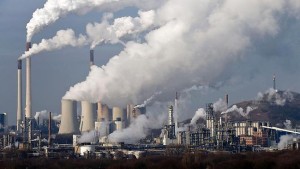The Changing Climate of Health
This December, the 2015 United Nations Climate Change Conference will be held in Paris, 21 years after the first United Nations Framework Convention on Climate Change and 11 years after the Kyoto Protocol. This time, the conference objective is to achieve a legally binding and universal agreement to reduce emissions to a low enough degree that global temperatures do not increase to 2 degrees Celsius (3.6 F) above pre-industrial levels. After China and the United States jointly agreed to limit emissions, there were hopes that the 2014 UN Climate Change Conference Climate might finally end the gridlock that has stalled global climate talks for so long. Unfortunately, the result was underwhelming: 190 governments agreed to provide vague pledges to limit greenhouse gas emissions despite the European Union’s push for more detailed plans. Thus, the result of the 2015 Paris deal could easily become nothing more than a patchwork of individual national offers for emission reduction.

Climate change is not just an environmental issue though. It affects the social and environmental determinants of health and is likely to have an overwhelmingly negative impact on a global scale. A report from the Lancet and the University College London Institute for Global Health Commission claimed that “Climate change is the biggest global health threat of the 21st century”, and the effects are already visible. With this year set to be among one of the hottest on record according to the UN weather agency and increasing amounts of heat waves, floods, droughts and rising sea levels, pressure for change is mounting. But the stakes will become even higher when the true impact of climate change on the world’s health is taken into account.
There is a significant correlation between cardiovascular and respiratory issues and the amount of pollution in the air. The WHO estimates that 4.3 million deaths per year are attributed to household air pollution. Another 3.7 million deaths are attributed to ambient air pollution. Before the 2008 Olympics, China committed to cleaning the air in Beijing, resulting in a 60% drop in sulfur dioxide, 48% reduction in carbon monoxide, and a 43% lower nitrogen dioxide levels. Post clean up, heart rates, blood pressures, and levels of clotting and inflammation factors which can induce cardiovascular issues all dropped. Moreover the study examined healthy young adults, inferring an even larger significance to higher risk groups are more dramatically affected by these changes. Rising air temperatures contribute directly to deaths from cardiovascular and respiratory disease as well, especially in elderly populations. For example, during the 2003 heat wave in Europe, over 70,000 excess deaths were recorded.
The number of weather related natural disaster deaths has more than tripled since 1960, currently resulting in over 60,000 deaths a year. Over half of the world’s population lives within 60 km of the sea, making them particularly vulnerable to water related disasters due to rising sea levels and increasingly frequent extreme weather events. Even if such events are survived a range of negative effects such as displacement, communicable diseases and mental health disorders are common. Increasingly variable rainfall patterns paired with water contamination from disasters have devastating effects on safe water supplies exacerbating the diarrheal diseases that kill almost 600,000 children under 5 every year. Food security is also under threat, as insufficient rainfall could reduce food production by 2% per decade while demand is increasing by 14%. Some regions could have food production reduced by as much as 50% by 2020. Additionally, ocean acidification due to CO2 emissions severely impacts the populations of fish and mollusks most eaten by humans. Malnutrition already causes 3.1 million deaths a year and this trend would exacerbate the already terrible death toll.
Patterns of infectious diseases are also changing in response to changing climates. Tropical diseases that are carried by vectors such as insects, snails, and other coldblooded animals gain lengthened transmission seasons and alter their geographic range, exposing people to disease in more parts of the world and for longer periods of time. Small changes in climate are enough to make dramatic changes in disease patterns. For example, changes as small as half a centigrade increase in temperature are enough to increase mosquito populations by 30-100% depending on other environmental factors. As a result, malaria, which kills around 800,000 people every year and is carried and transmitted by mosquitoes, has begun to expand from the low lands of East Africa to the historically colder highlands as temperatures rise and poses and even greater risk in endemic areas.
Another mosquito-borne tropical disease, Chikungunya, has been steadily increasing its geographical range as temperatures rise. First discovered in 1952 along the border of Mozambique and modern day Tanzania, the incredibly painful disease only had brief outbreaks sub-Saharan Africa. Chikungunya outbreaks then began occurring in South Asia and South East Asia and then the Middle East. In 2013, the virus spread quickly on the island of St. Martin, through the Caribbean and into South and Central America, causing outbreaks in 23 countries in the Western Hemisphere. Between 2006 and 2013, 200 cases of Chikungunya were reported in the United States, but all cases were travelers and did not trigger local outbreaks as there were no infected mosquitos to transmit the disease. However, by the end of 2014 the virus had begun spreading locally in warm muggy states like Florida, along with West Nile Virus and Dengue Fever. As of February, 2015, 8 states and two territories had confirmed cases of Chikungunya.
Global health will be affected by climate change. But people living in developing countries, coastal regions, and large cities as well as children and the elderly will be particularly vulnerable. These demographics make up a huge part of the world’s population, making action against climate change all the more important. If current trends continue, climate change is expected to cause 250,000 additional deaths per year from just malnutrition, malaria, diarrhea, and heat stress, incur direct health damage costs of up to US $4 billion a year.
